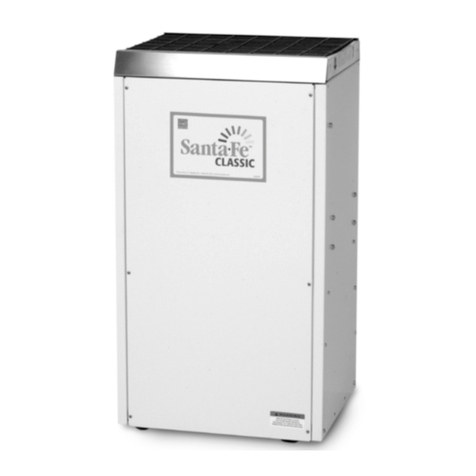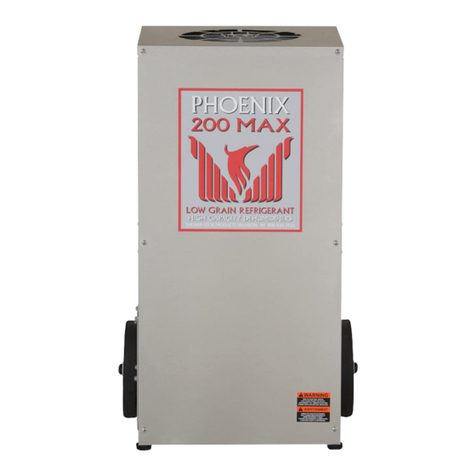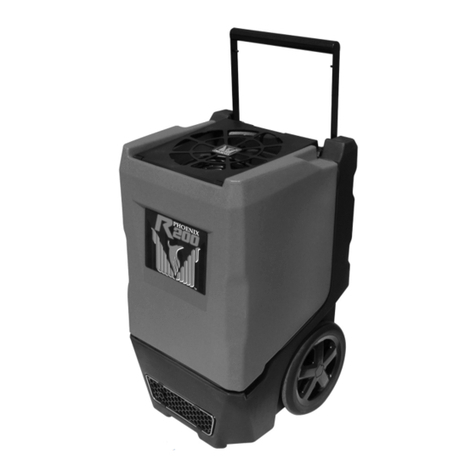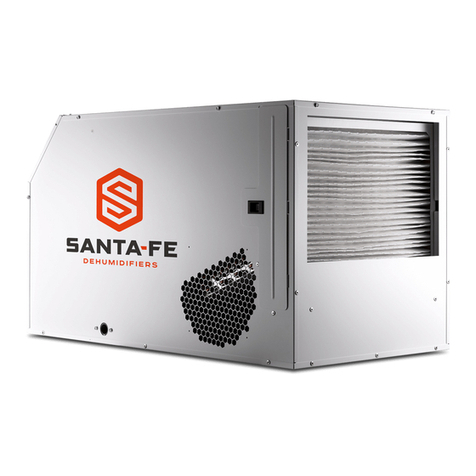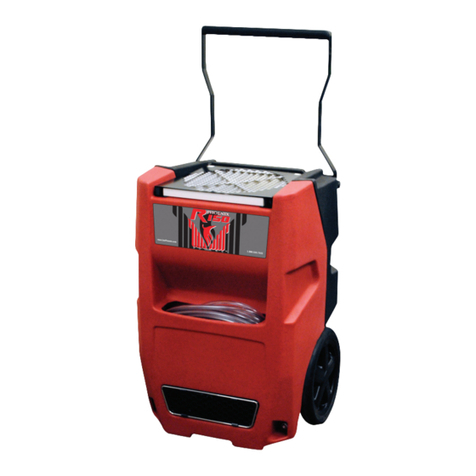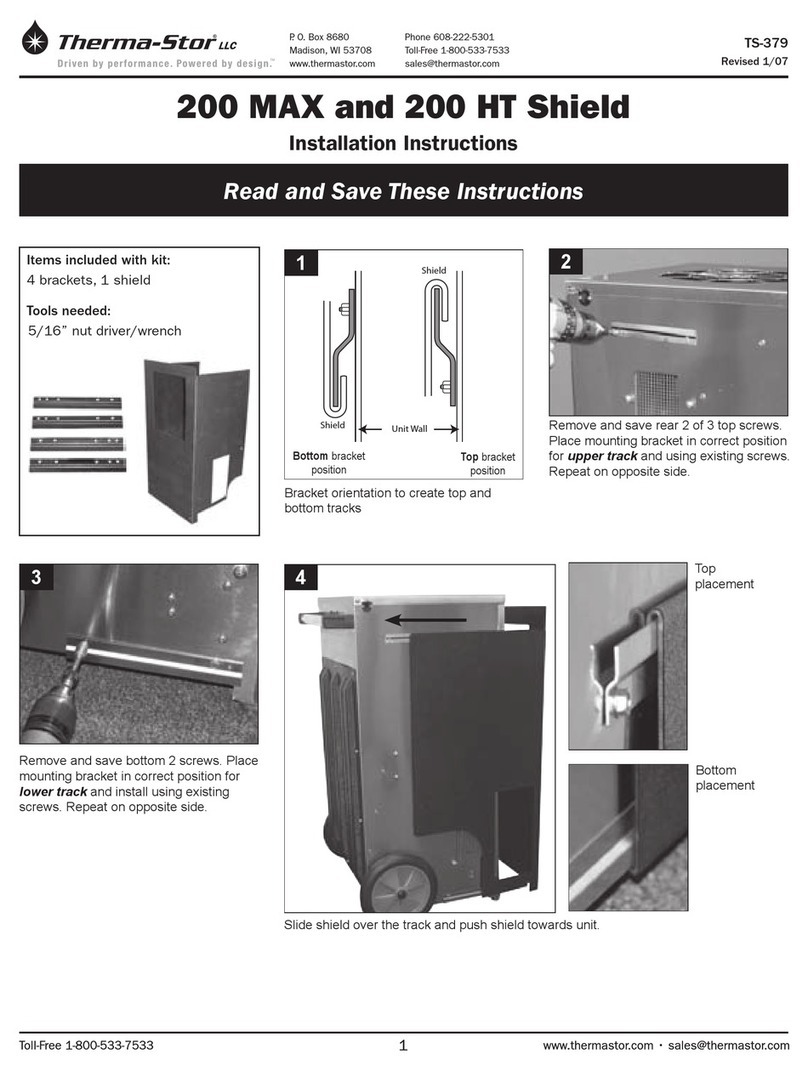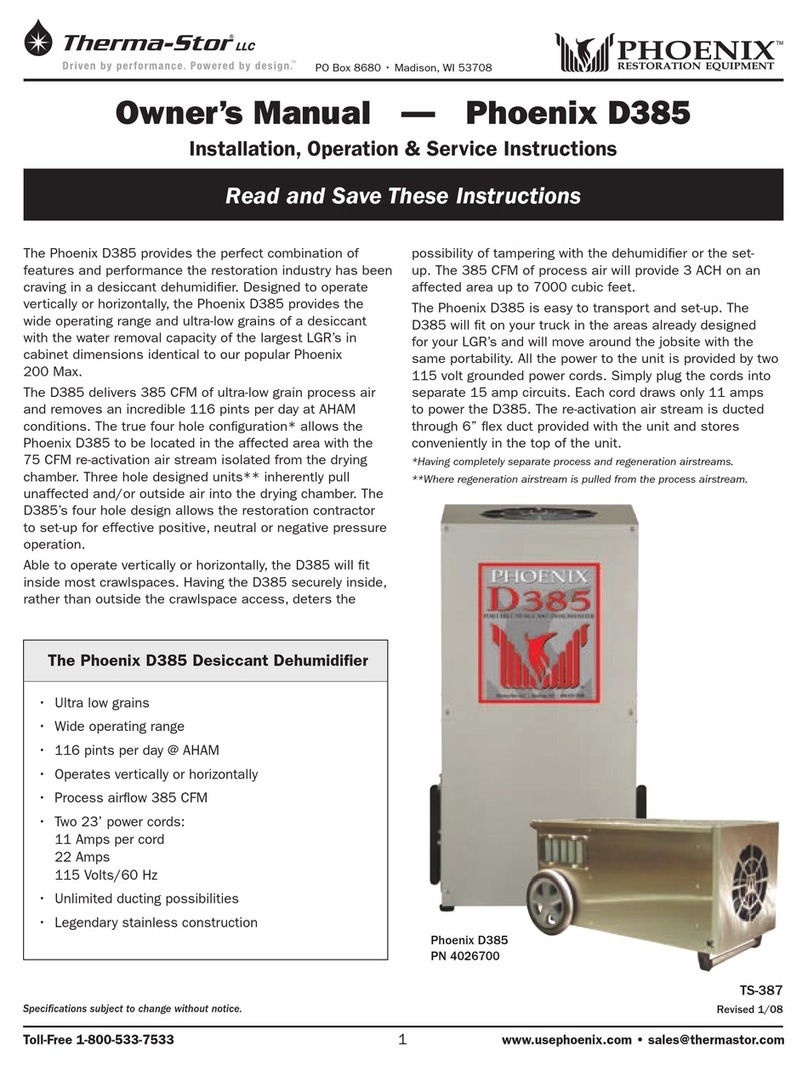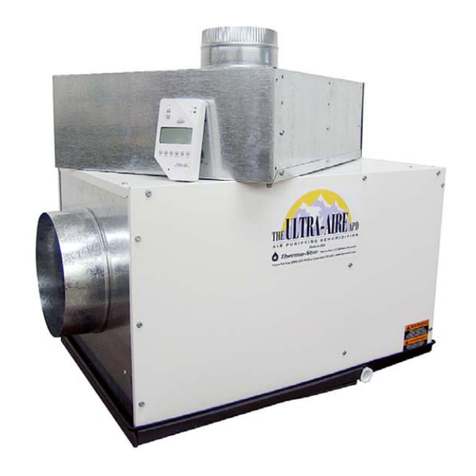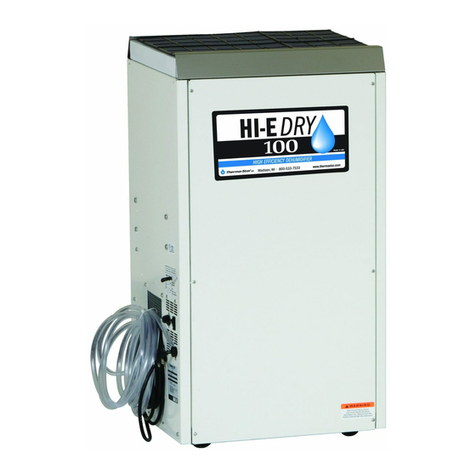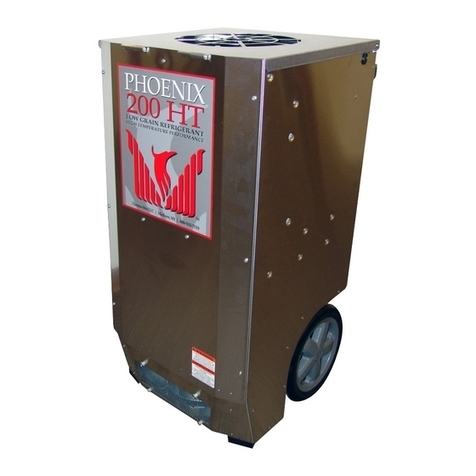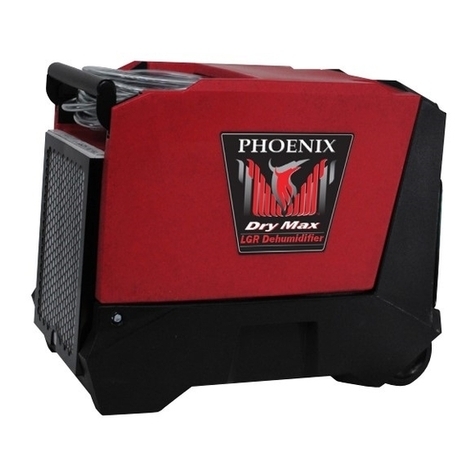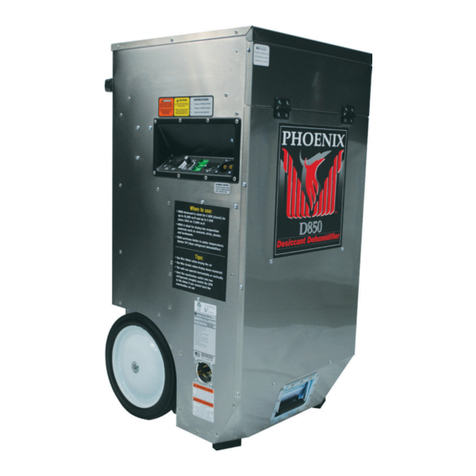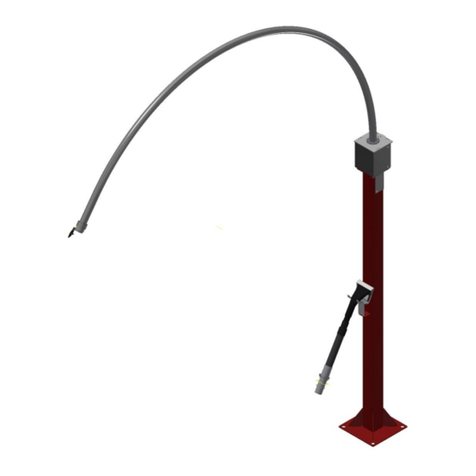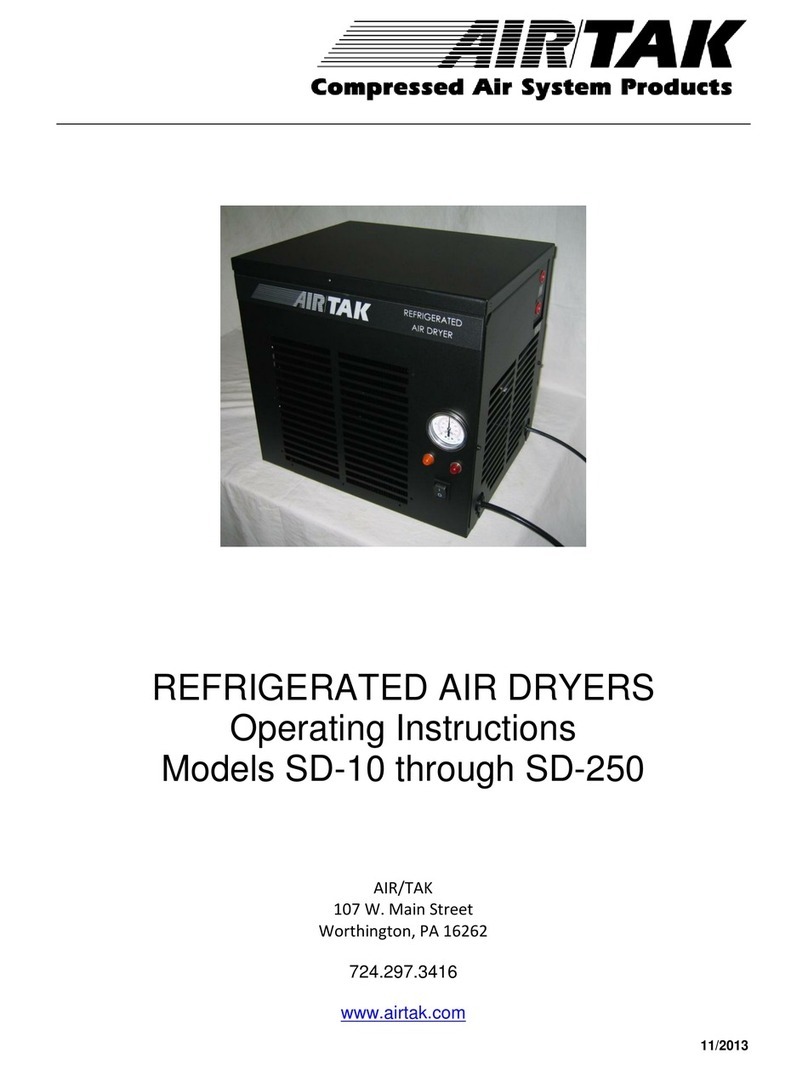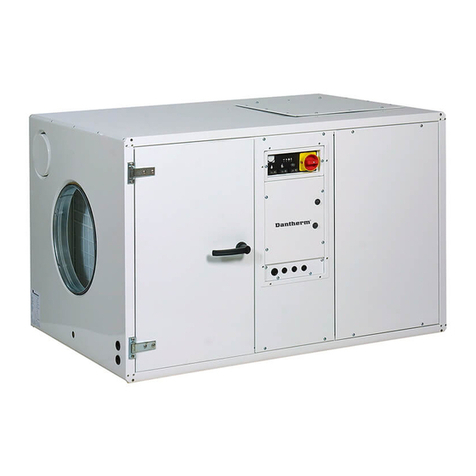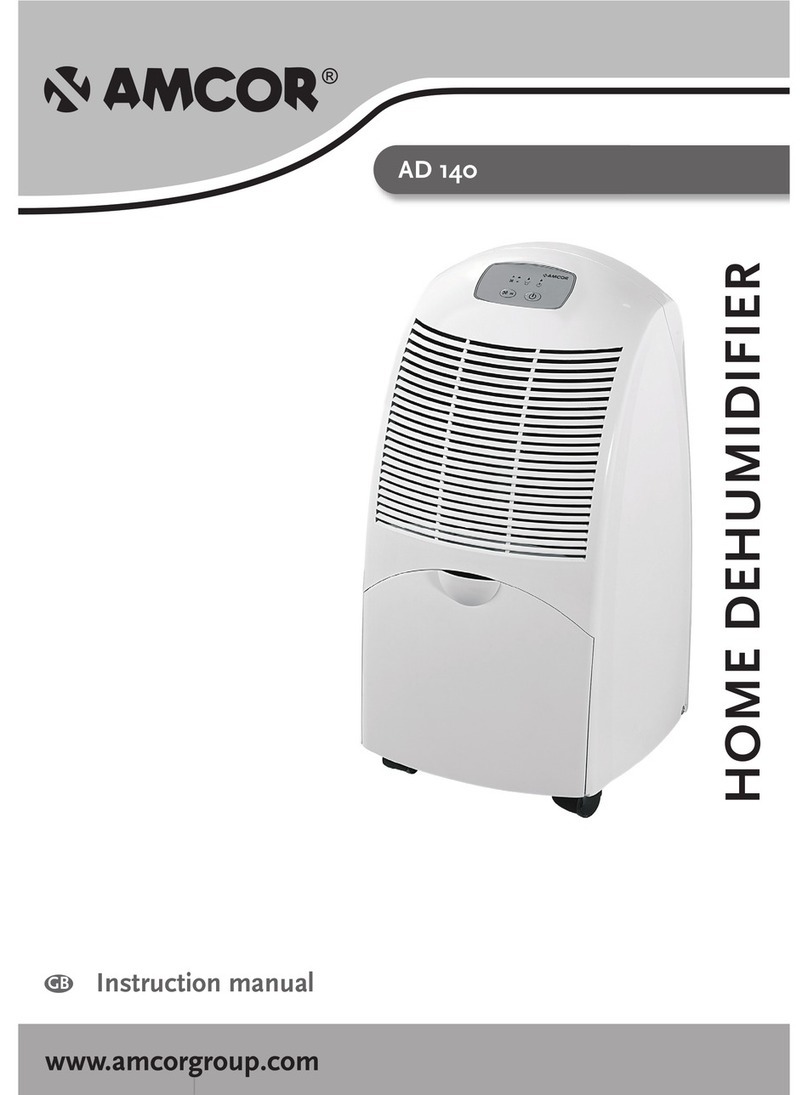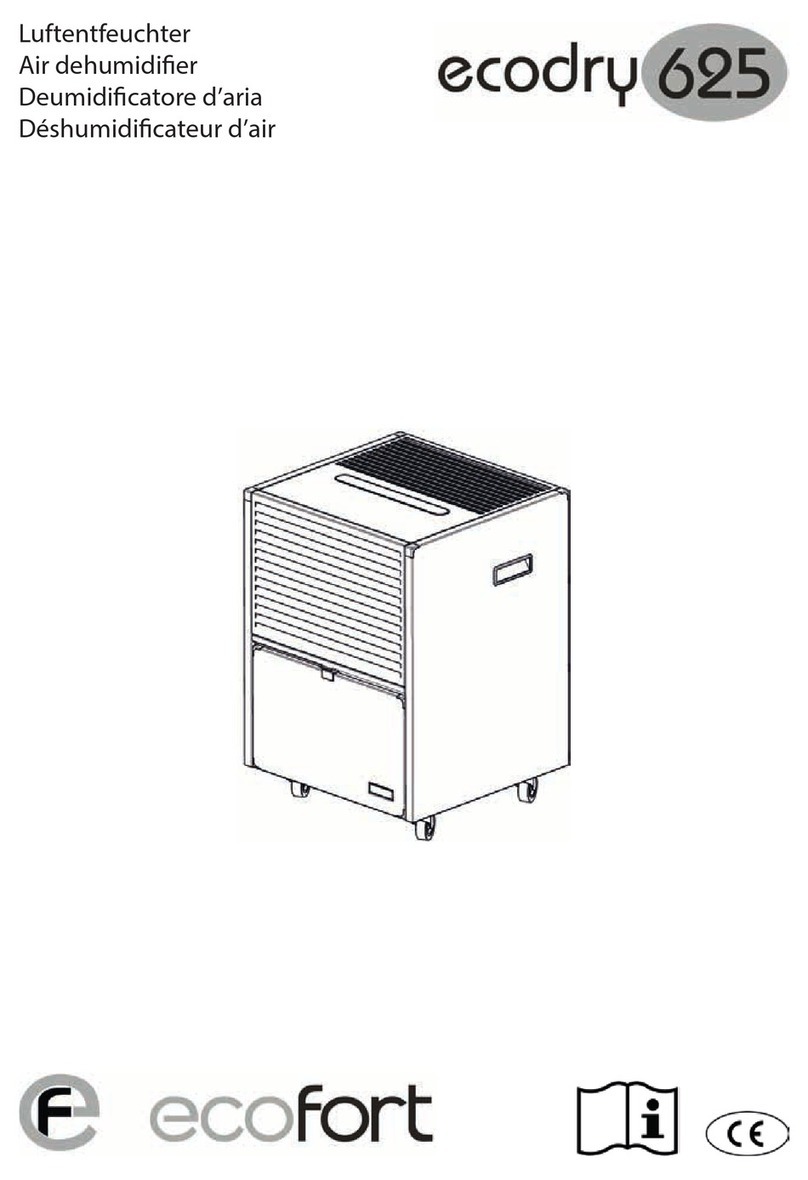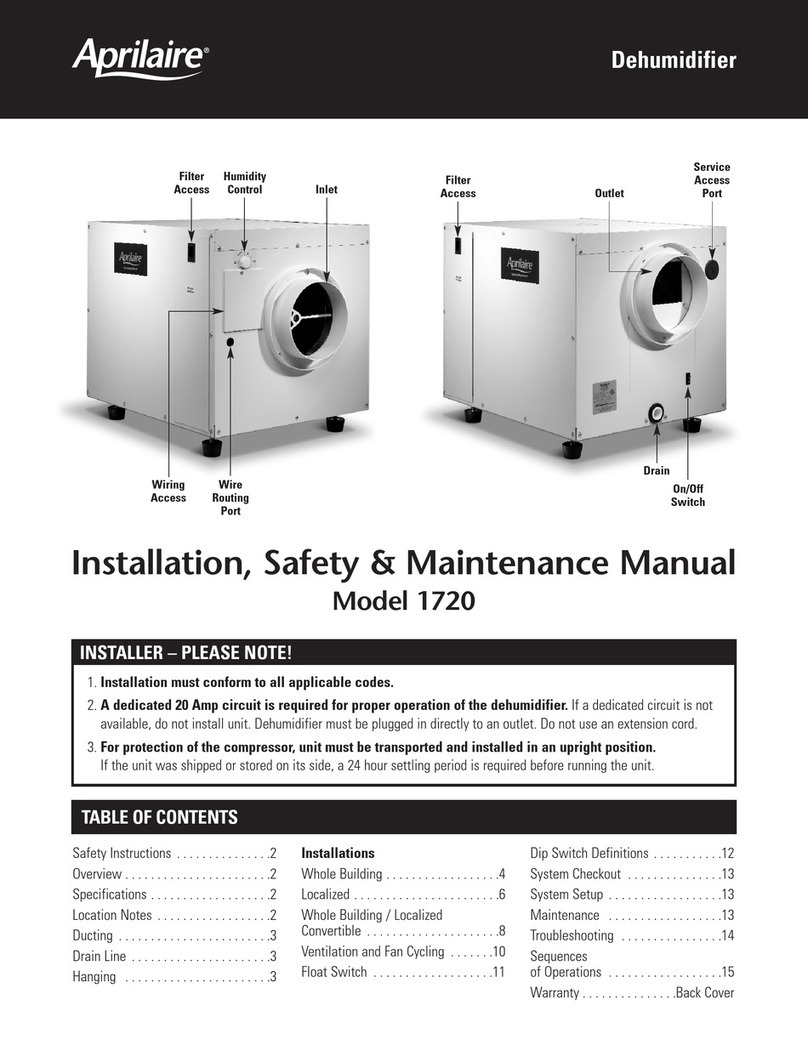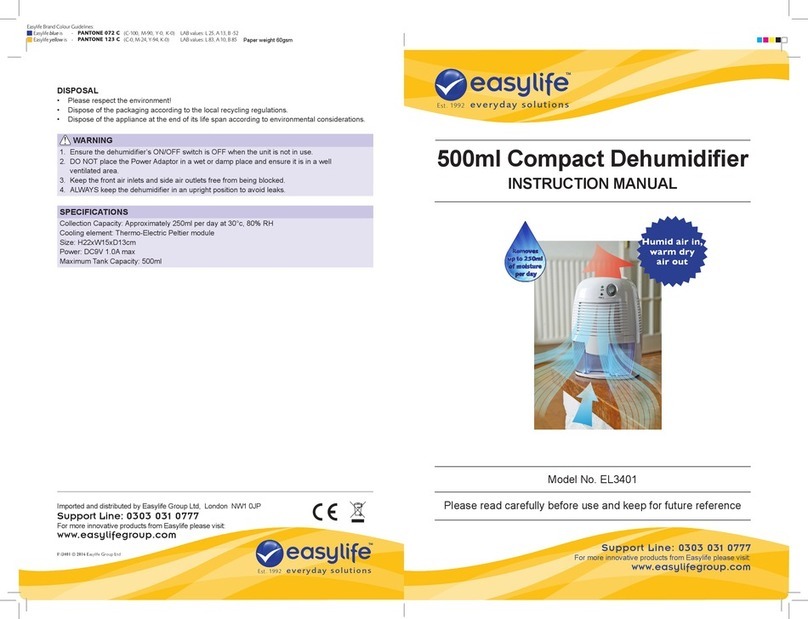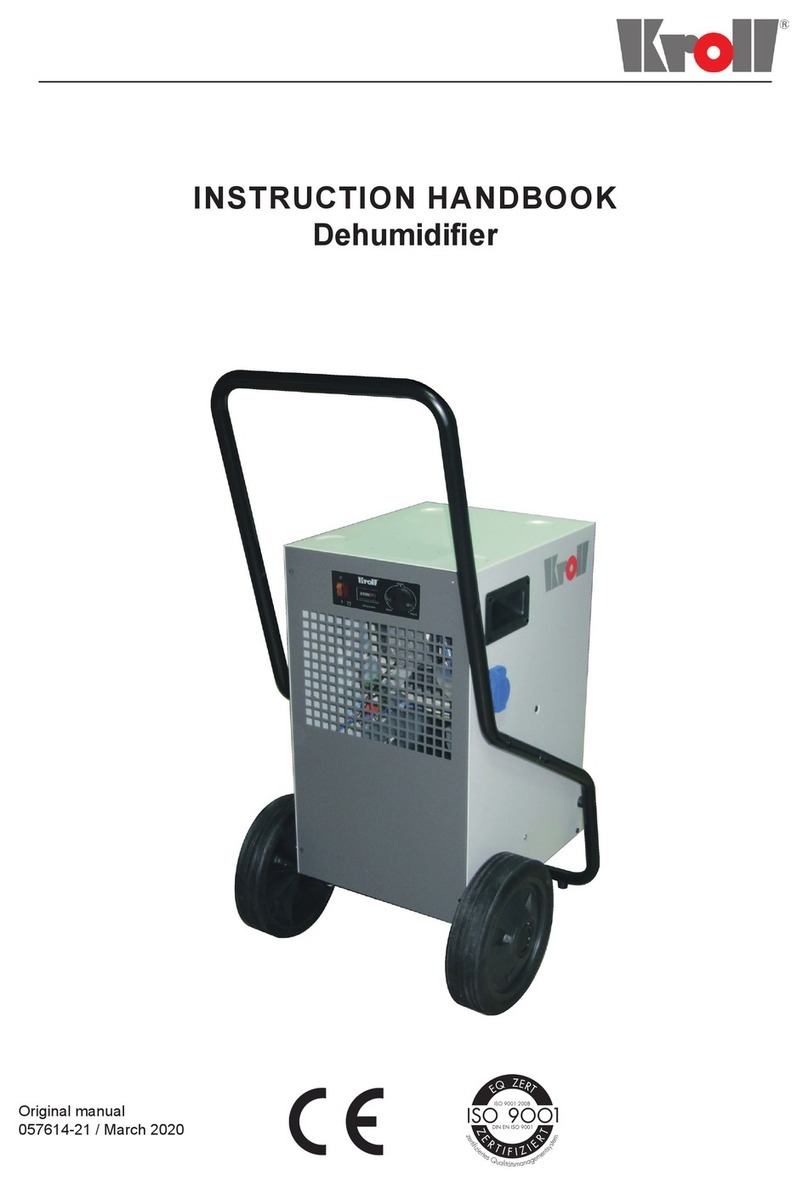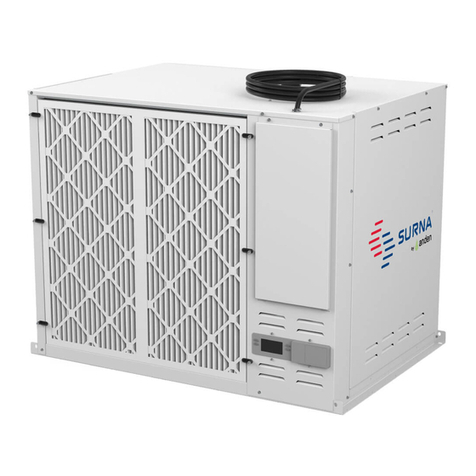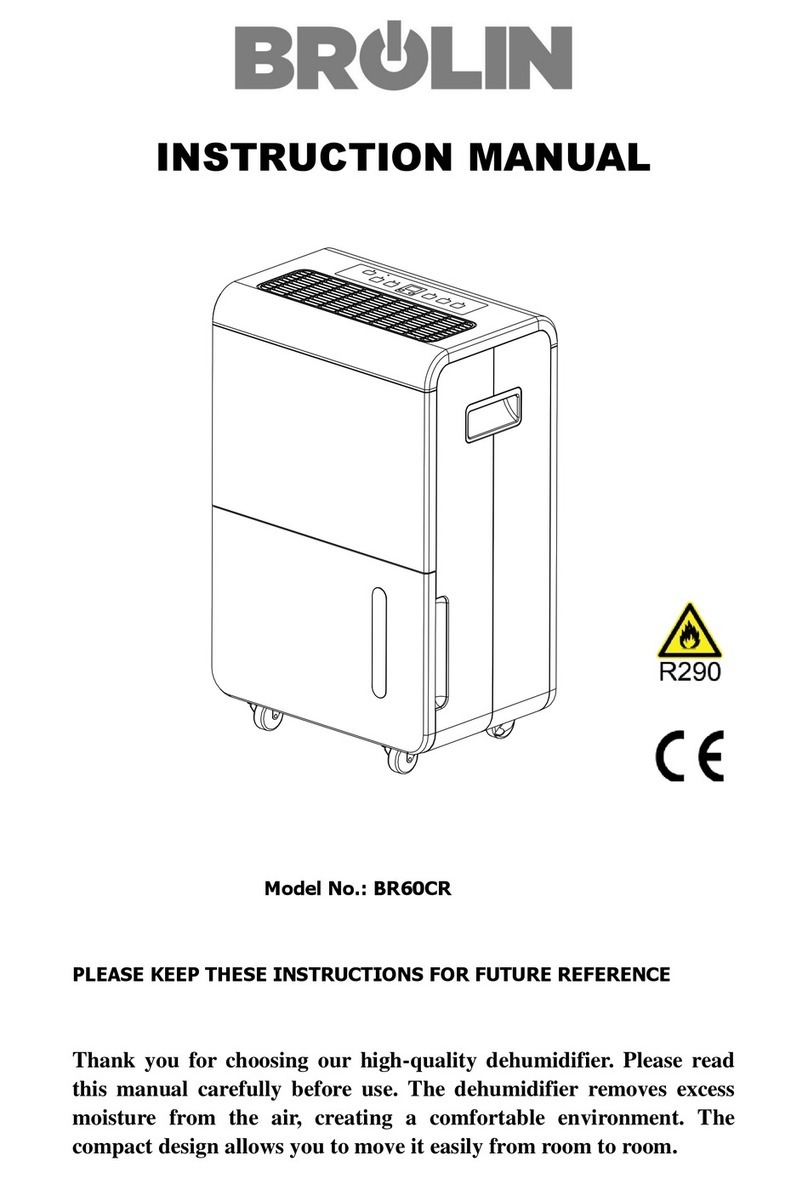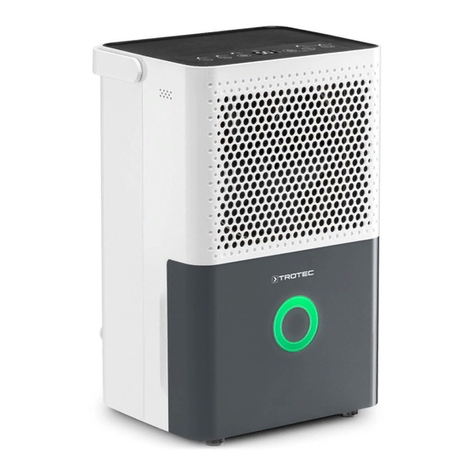
5
air from outside the drying chamber, while the Process Air
Outlet is ducted into the chamber.
3.4 Ducting
To get maximum performance out of the 1800DX
desiccant dehumidifier, ALL SUPPLY AND RETURN AIR
DUCTING MUST BE AIR AND VAPOR TIGHT. This is
extremely important for proper performance. Ensure that
reactivation discharge air does not enter the process
or reactivation inlets. Be sure that the return air duct
connection(s) is physically sound, is sealed to the
appliance casing, and terminates outside of the trailer.
Using excess duct length significantly reduces air flow
volume through duct. This is true in any application. If the
job at hand needs a short length of duct, cut a section to
the appropriate length. If air flow is restricted by excess
length, performance will suffer. The same can be said of
excess bends in the ducting.
All ducting materials are available from Therma-Stor LLC
(see accessories list in Section 1).
Process inlet: 14” flex duct. (356mm)
To attach flexible ducts to the process air inlet, push
the duct wire past the metal flange on the 1800DX duct
collar. Secure with hose clamps or ratcheting straps. If
only using one inlet connection, seal second connection.
Process outlet: 14” flex or lay flat plastic duct.
(356mm)
To attach flexible ducts to the process air outlet, push
the duct wire past the metal flange on the 1800DX duct
collar. Secure with hose clamps or ratcheting straps.
When using 14” (356mm) lay flat ducting, slip over the
outlet collar and zip-tie or duct tape in place.
3.5 Avoiding Secondary Damage
The Phoenix 1800DX is a powerful tool capable of
removing a great deal of water from most environments.
Care must be taken to avoid secondary damage of over-
drying and or unexpected condensation.
The Phoenix 1800DX removes vapor water from the
incoming process air stream and transfers it to the
outgoing reactivation air stream. The reactivation exhaust
air is hot and wet.
Take care to prevent the reactivation exhaust air stream
from causing secondary damage due to condensation.
Always ensure the 1800DX is located with the
reactivation outlet pointed such that reactivation air will
NOT be drawn back into the structure.
The Phoenix 1800DX does not produce liquid water
internal to the machine. There is no condensate pump
and no drain hose.
The 1800DX desiccant dehumidifier will continue to
remove water from already dry, cold air. It is possible to
over-dry objects and or structures.
Care must be taken to avoid secondary damage due to
over-drying.
3 Installation
Proper installation is critical to the performance of the
Phoenix 1800DX. Follow the guidelines below to maximize
service life and performance.
3.1 Inspection
Thoroughly inspect the machine to ensure no damage
has occurred during transport or on the job site. Check
for any obvious signs of deterioration of the 1800 device.
Examine the base of the 1800 for signs of sagging, gaps,
or cracks between the base and the trailer floor.
3.2 Location
Note the following precautions when locating the Phoenix
1800DX:
Trailer must be located outdoors with reactivation outlet
pointed away from open windows or building fresh air
inlets. Position trailer for shortest, straightest duct run
to structure. Provisions for adequate combustion and
ventilation air must be provided in accordance with section
5.3 of the National Fuel Gas Code ANSI Z223.1.
Always ensure the 1800DX is located with the reactivation
outlet pointed such that the reactivation air exhausts
to the atmosphere in an unoccupied area and can NOT
be drawn into any nearby structure. Do not exhaust
reactivation air across walkways or towards buildings,
openable windows, or building openings. Do not allow
the reactivation outlet to become obstructed by snow,
construction debris, etc. Maintain a minimum 4’
clearance around electric and gas meters, regulators, and
relief equipment. Locate device a minimum of 10’ from
combustible constructions. Be aware that reactivation air
contains flue gasses that, over time, can degrade some
building materials. Do not connect device to a chimney
flue serving a separate appliance designed to burn solid
fuel.
Do not direct process or reactivation air streams toward
any Propane-gas container within 20’ (6m).
3.3 Set-Up
When conditions warrant the use of a desiccant
dehumidifier, use one of the setups described below to
achieve efficient drying, while avoiding secondary damage.
Review Section 2.1 to understand the desiccant drying
process. Always ensure the 1800DX is located with the
reactivation outlet pointed such that reactivation air will
NOT be drawn back into the structure.
Neutral Pressure Setup
Many drying applications require neutral pressure
operation. In this setup, the Process Air Inlet pulls air
from the affected area (drying chamber) and returns dried,
processed air to the affected area via the Process Air
Outlet.
Positive Pressure Setup
For Positive Pressure operation, the Process Air Inlet pulls














